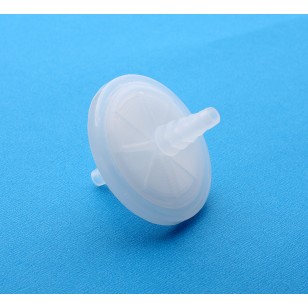To minimize equipment damage, Syringe Filters are typically used to remove particles from liquid samples before analysis. They are generally inexpensive, may be used for modest quantities, and eliminate the complications associated with Buckner filter setups.
The two primary sorts of filters are those that recover your sample and those that do not. The majority of syringe filters do not allow the recovery of the solid. They are frequently employed before analysis to eliminate any solid or undissolved material. But other types of filter holders are easy to reclaim.
Syringe filters are typically membrane filters with a specified particle size cut-off of 0.45m. Syringe filters are also available for gas filtering and bacterial removal from samples. They are also used to reduce the damage caused by illegal drugs.
Syringe Filter Options Or Types
There are various factors to consider while selecting a syringe filter. Among the most important are:
- The pore size of a filter body
- Filter material
- Filter Size
- Volume retained on the filter after filtration is also known as hold-up volume.

Pore Size
Filters are available in a variety of pore diameters in the market. The most prevalent ones in physical chemistry labs are 0.2 um and 0.45um. In general, 0.45um is adequate for the vast majority of treatments. Where smaller particles are present in the sample, however, 0.2 um or 0.1 um may be more acceptable. Other forms of filtration may be more suited if you need to filter a finer particle size, for example, to eliminate colloids.
Filter Material
Syringe filters are made from a variety of filter materials. The most popular are PES Syringe Filter and cellulose acetate. Chemical compatibility, flow velocity, and burst pressure is the primary distinctions. The material will also affect the effective filtration area and hence the filter's capacity.
Here is a List of the Key Choices
Cellulose Acetate
This contains Exceptional flow rates. Because they have a low protein binding strength, they are appropriate for protein recovery applications. Although they have weak solvent resistance, they are hydrophilic and so suitable for aqueous and alcoholic media. The pH range is 4-8.
Cellulose Nitrate
This has a strong mechanical strength, fast flow rates, and a low extractable level. This is an excellent choice for trace element analysis applications and its protein binding is quite strong. The pH range is 4-8.
Regenerated Cellulose
This is created from pure cellulose and does not contain any wetting agents. Chemical tolerance to a wide range of solvents. Wet strength is quite high. Because it is hydrophilic, it is appropriate for aqueous and organic samples. Protein binding ability is quite poor. The pH range is 3-12.
Polyethersulfone (PES)
PES Syringe Filter is hydrophilic, stable at low pH, has low amounts of extraditable, and has less protein binding, making it appropriate for a wide range of aqueous and organic solvents. PES membranes have a greater liquid flow rate than PTFE membranes. Temperature tolerance, the 3-14 pH range is sometimes 1-14.

PTFE
This material is ideal for filtering gaseous or organic solvent-based samples and corrosive chemicals. Because it is hydrophobic, it is resistant to hostile conditions and has temperature stability, allowing for more sample range. When employed with aqueous samples, the membrane generally has to be pre-wetted normally by using a small amount of alcohol. It also comes in use to keep moisture out of air vents. The pH range is 1-14.
Filter Size
The diameter of the syringe filter provides an accurate estimate of the EFA and hold-up capacity. As you extract particles from the fluid, they block the holes of the syringe filter, reducing the usable section of the filter and finally clogging it. Particulate-laden fluids typically filter faster than "clean" fluids. Filtering dirty samples becomes possible by increasing the size of the filter.
If the pressure required to force liquid through the filter gets high, the filter is most certainly clogged and needs a replacement. If you press too hard, you risk damaging the filter and allowing particles to pass through.
The greater the fitter the diameter, the greater the hold-up volume. It is the amount of liquid left in the filter after usage. When using expensive or scarce fluids a filter with a low hold-up capacity is advised.
Conclusion
If you are not having any difficulties. There is no better time to explore less-priced options for Syringe Filters. Never reuse a syringe filter, even if it appears to be clean. Whatman products filter out exceedingly small particulates that are not visible to the human eye. Filters should be discarded after a single usage to ensure uniformity of results. Many people are unaware of how many alternatives they have when selecting a syringe filter. We hope that the options above will help you to find the best one.






